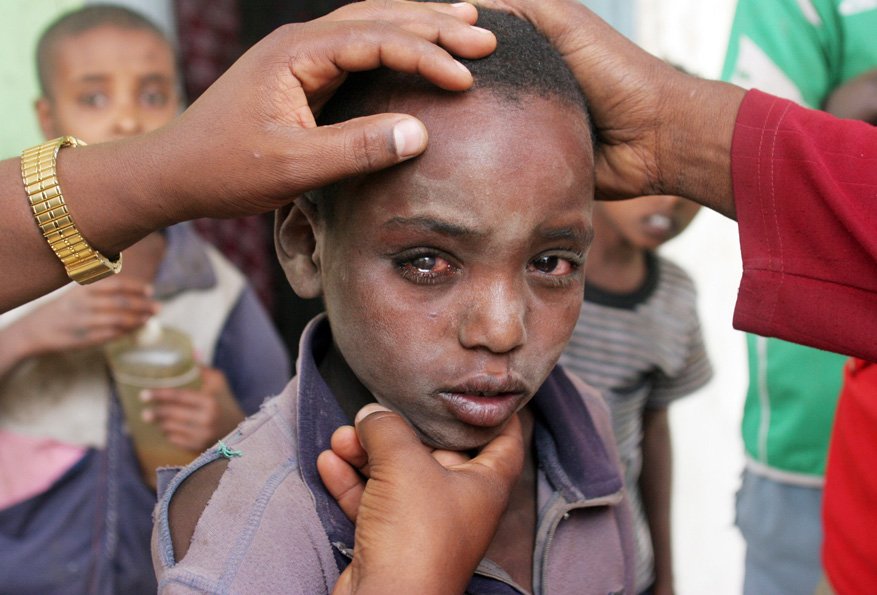
New data recently released by the World Health Organization (WHO) revealed that the number of people at risk of infectious blindness from trachoma has been reduced by 91 percent since 2002.
This announcement comes only months after a group of donors announced a $105-million commitment to Accelerate, a program designed to increase progress on the elimination of trachoma, at Global Citizen Festival: Mandela 100.
Trachoma is a neglected tropical disease (NTD) which is the leading cause of infectious blindness in the world. While it starts as a bacterial infection, it will worsen quickly if not treated, and will then line the inside of the eyelid with jagged scars and force the eyelashes to turn inward.
The new figures, which were revealed at the WHO Alliance for GET2020 meeting, show that the number of people at risk decreased from 1.5 billion in 2002 to more than 142 million in 2019.
The data also demonstrates that the number of people needing surgery for the late and blinding stage of trachoma (trachomatous trichiasis) fell from 7.6 million in 2002 to 2.5 million in 2019 — showing a reduction of 68%.
Moses Chege, Accelerate Deputy Director at @Sightsavers, shares an update on the fight against #trachoma and the $105M commitment made to @TheAudaciousPrj by @DFID_UK, @VirginUnite, @CIFFchild @ELMAPhilanthro, and @gatesfoundation at #Mandela100. pic.twitter.com/5w0KGXNlB1
— Global Citizen Impact (@GlblCtznImpact) June 27, 2019
This NTD does affect the most impoverished communities in the world. It's become a public health issue in 41 countries, mainly affecting the most vulnerable areas of Africa.
There are 149 countries and territories across the world, which are impacted by at least one NTD — and a hundred percent of low-income countries are affected by at least five at a time. NTDs include illnesses such as leprosy, trachoma, onchocerciasis (river blindness), soil-transmitted helminthiases, and many more.
Reference: Global Citizen












COMMENTS